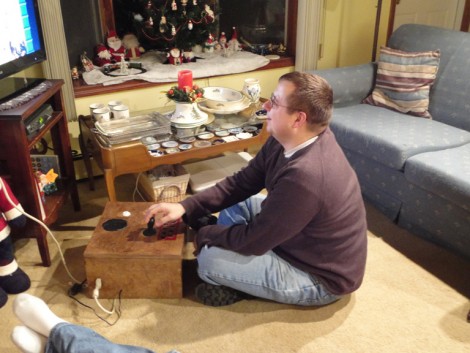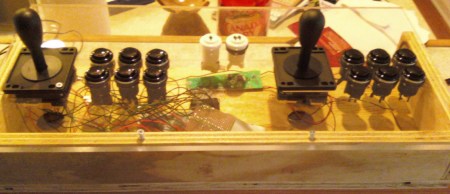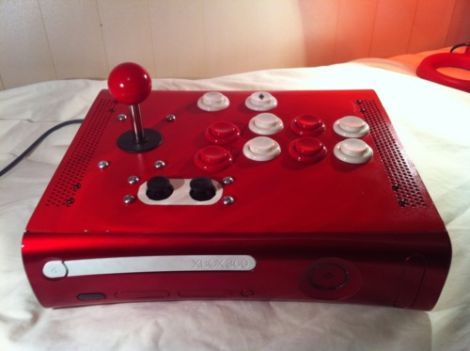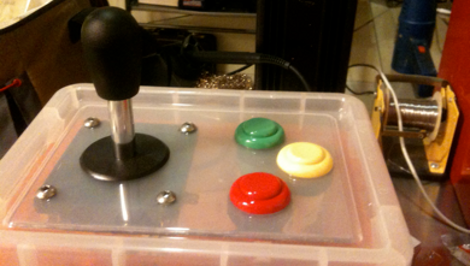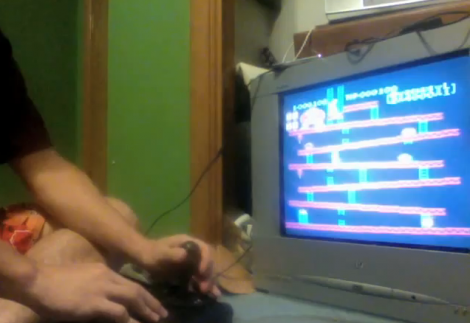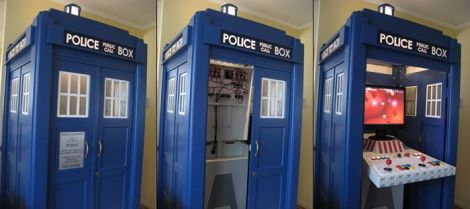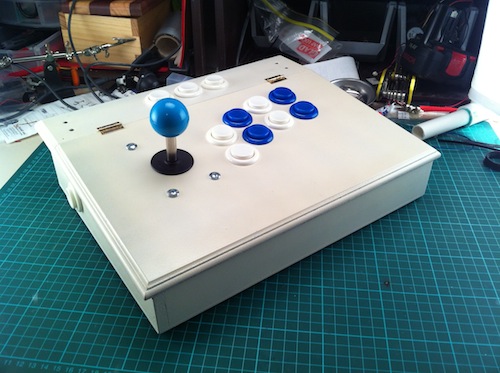
[Aaron’s] arcade controller really makes us want to put in a button order. There aren’t any secrets hidden in his design or fabrication, but he did a remarkably clean job of putting it together.
The housing is a writing box he bought at the hardware store (but he also shows off an emtpy Xbox 360 case hosting the same control layout). It has a hinged cover which is perfect for getting at the components inside, and is also at a nice angle for your wrists during long gaming session.
An Xbox 360 controller provides the connectivity for the device. Obviously it will work with the Microsoft hardware, but all modern operating systems have methods available for interfacing with these controllers as well. In the video after the break you can see [Aaron] gut the controller, soldering wires to all of the button pads and connecting those to some terminal strips. This makes the wire organization inside quite clean. He uses crimp connectors to jumper the buttons and joy stick to the other side of the terminals. Add a nice paint job and you’ve got a controller that will look right at home in your living room.
Continue reading “Arcade Controller Will Give You Button Envy”

